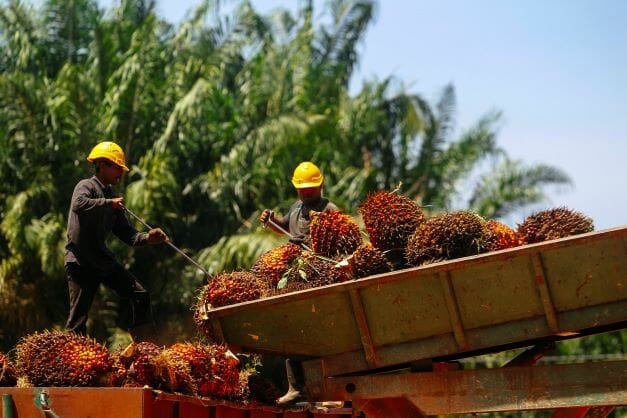Established in 1978, : Johor Plantations Group Berhad (JPG) primarily focuses on cultivating oil palm, producing and selling CPO and PK.
JPG operates mainly in Johor, Malaysia and has a total landbank of approximately 59,781 Ha with a total planted area of 55,904 Ha Malacca Securities (MSSB), in a note today (June 24) said they project topline growth of 5%-7% to RM1,334.9m-1,471.8m for FY24f-26f, with core net profit forecasted to increase by 2.1%-5.4% to RM177.1m-194.1m.
This is in tandem with the excellent prime age palm profiles and replanting plan of old oil palms with higher-yielding material.
MSSB ascribed a fair value of RM0.97 for JPG, by pegging a P/E of 13x to the FY24f EPS of 7.1 sen.
They believed the 13x P/E is justified as it aligns with the similar size (RM1-3bn) peers’ average P/E and forward P/E of 16.4x and 12.1x, respectively.
Investment Highlights
Favourable age and topographical profile of oil palms. Generally, oil palm reaches prime maturity, i.e. peak production stage from 9 to 18 years old, with yields of over 25 tonnes of FFB per ha per year.
As of the lockup period (LPD), approximately 54.3% of JPG’s total oil palm planted areas comprises with prime young oil palms aged between 9 to 18 years, 6.8% being age below 3 years old, 14.3% ranging from 4 to 8 years, with remaining of 24.6% being old oil palms.
JPG’s oil palms, which had a weighted average age of 13.9 years at the LPD, have a favourable age profile that JPG actively manage through replanting and land acquisition or rental.
As most of JPG’s oil palms are in their peak production years, MSSB believe that the excellent age profile of JPG’s oil palms will drive an increase in their FFB production, which will also lead to an increase in CPO and PK production in the coming years.
Robust operational performance – The young age of palm profile gives an operational advantage to the JPG, seen by substantial FFB yields of 22.9 tonnes, 20.1 tonnes, 22.1 tonnes, and 20.3 tonnes per ha in FY20-23.
This translates to a higher than national average CPO yield of 6.06 tonnes, 5.42 tonnes, 4.41 tonnes, and 5.23 tonnes for the period.
The high FFB yield achieved is also substantially higher than its close peers, averaging 19.7 tonnes in FY23.
Replanting plan to improve operational efficiency – As of the financial year under review, JPG achieved a palm product yield of 6.0 MT/Ha, 5.3 MT/Ha, 5.7 MT/Ha, and 5.1 MT/Ha, respectively.
JPG aims to increase their yield at a minimum of 7.0 MT/Ha by FYE25 by replanting oil palms of approximately 3942 Ha with higher-yielding planting materials using various clonal palms such as KT clonal and improved DxP seedlings.
JPG also aims to continue replanting their estates with improved planting materials developed from their research and development activities and incorporate more mechanisation and digitalisation into their production process to increase their CPO and PK production, MSSB said.
Established in 1978, JPG primarily focuses on upstream activities, such as cultivating oil palm, and producing and selling CPO and PK.
The company operates mainly in Johor, Malaysia, with a total landbank of 59,781 hectares and a total oil palm planted area of 55,904 hectares.
JPG has 5 operating palm oil mills with an average processing capacity of 60 tonnes per hour.
Approximately 54.3% of its oil palms are in the peak production age, with a weighted average age of 13.9 years.









